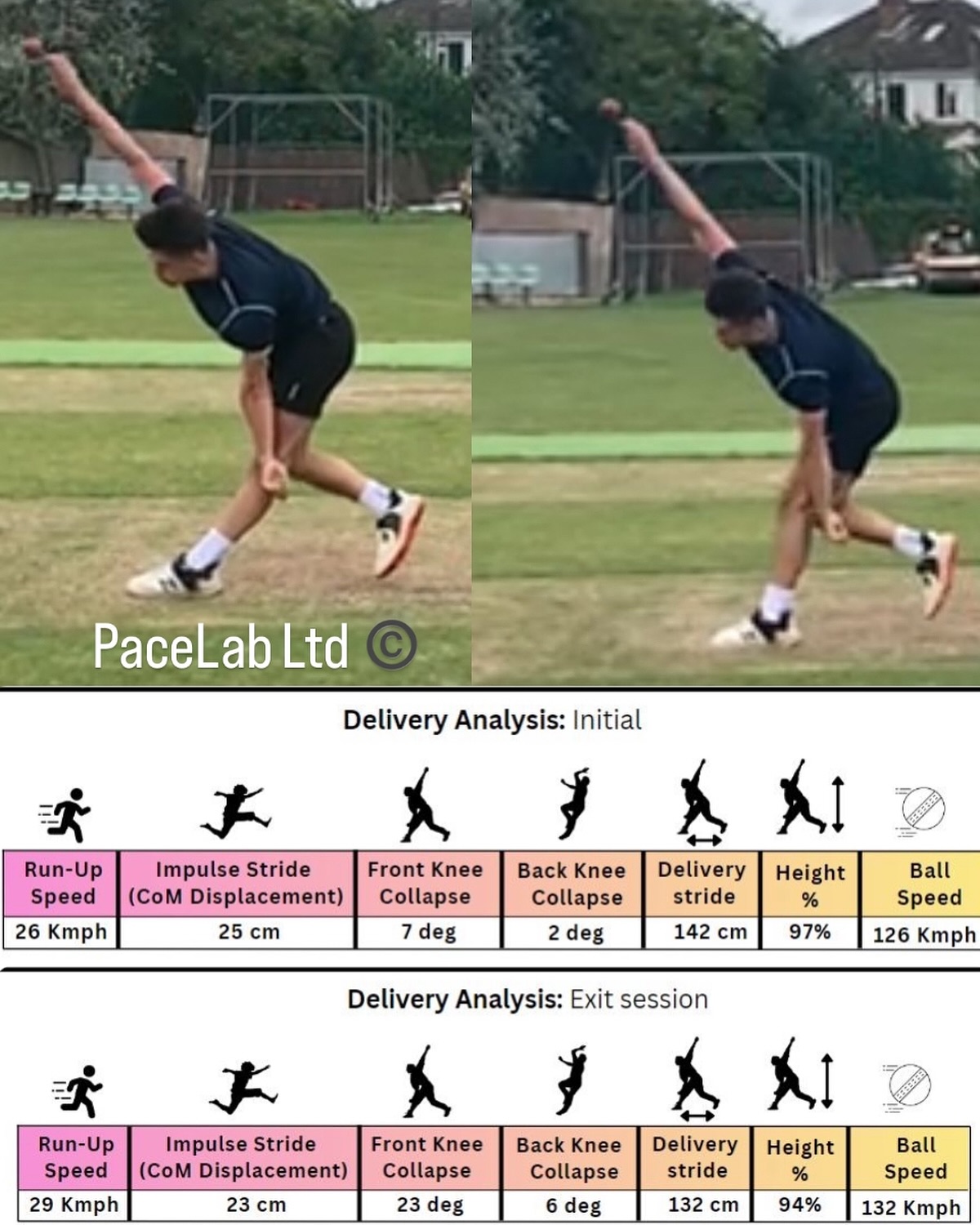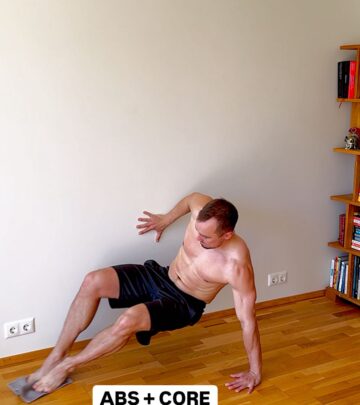System Speed Trumps Ideal Shape In Fast Bowling
Biomechanics reveal that run-up speed and sharp coordination matter more than perfect form

Image: Instagram
Steffan Jones, a renowned figure in fast bowling coaching and biomechanics, has recently unveiled a case study that challenges conventional wisdom regarding ideal body shapes in fast bowling. The study shows that a perfect static posture isn’t as crucial as dynamically coordinating system speed and precise timing during a bowling action.
Research Insights
In the session analyzed, the bowler managed to record an impressive 6 kph increase in ball speed within 30 minutes. Surprisingly, while both the front and back knee angles showed increased collapse—traditionally seen as detrimental to performance—the bowler’s adjustments in the run-up and delivery stride translated into a significant performance gain. The run-up velocity increased from 26 kph to 29 kph, amplifying horizontal momentum into the delivery stride. Meanwhile, even though the impulse stride (center of mass displacement) slightly decreased from 25 cm to 23 cm, the improved timing appears to have enhanced the effective transfer of energy through better hip-shoulder separation and sequencing.
Debunking The Ideal Shape Myth
A striking aspect of the study was the observation that the front knee collapse increased from a modest 7° to 23°. This finding disputes the long-held belief that a straighter front leg always guarantees a faster delivery. Instead, the research highlights that what truly matters is not the rigidity of the leg, but rather the timing of its stiffening. A delayed bracing action—even in the presence of some flexion—can effectively transmit energy if it is synchronized with higher pre-tension in the torso and lead arm mechanics. Similarly, the increase in back knee collapse might indicate an enhanced elastic contribution from the rear chain rather than simply representing a loss in vertical power.
Optimized Delivery Stride And Its Impact
Another important change noted was in the delivery stride length, which shortened from 142 cm to 132 cm. This contraction may help a bowler generate more rotational torque and achieve rapid front-foot contact, both essential for precise timing. Although the height percentage dropped slightly (from 97% to 94%), this seemingly counterintuitive adjustment likely reflects a more forward-torso dominated release, challenging the notion that any departure from an ideal posture necessarily results in inefficiency.
Jones’ analysis underlines that improvement in fast bowling performance comes from enhancing the overall system speed and coordinating movements rather than chasing an unattainable perfect shape. As the study concludes, intent, timing, and sequencing are the true drivers of speed, not rigid adherence to a static form. The simple yet powerful takeaway is: Trust the process.
Training Implications And Pacelab Principles
This case study echoes earlier insights shared on social media by Jones and others at PaceLab. In previous posts, Jones emphasized the importance of adapting to the forces experienced during fast bowling. He reinforced principles based on Davis’s and Wolff’s laws—biological rules stating that tissues and bones adapt to the direction and intensity of load. These principles suggest that rather than focusing solely on replicating a precise technique, coaches should tailor training programs that progressively overload and adapt the bowler’s body to the stresses of the game.
An earlier Instagram update from Jones elaborated on this adaptive approach, stressing that techniques should evolve by harnessing variability and targeted overload strategies. This method ensures that bowlers build robust and resilient mechanics capable of sustaining high-intensity performance under match conditions. By incorporating drills that refine sensory engagement and motor learning, such as shadow releases and controlled variability exercises, the training system aims at embedding deep neural attractors that secure consistent performance even when fatigue sets in.
A New Paradigm In Fast Bowling Coaching
Jones’ work represents a shift from the traditional emphasis on static, perfect forms to an integrated model where dynamic factors like run-up speed, impulse, and timing interplay to create the desired speed. His recent study, combined with multiple related posts, underscores a recurring theme: effective bowling is less about achieving an ideal shape and more about developing a system that harmonizes speed, power, and technical fluidity.
The meta message is clear. Rigid adherence to a ‘perfect shape’ might limit the natural adaptability and robustness of the athlete’s mechanics. Instead, by trusting the process and focusing on coordination under higher intensities, bowlers can achieve significant performance gains. This approach not only maximizes the transfer of momentum but also reduces the risk of injury by ensuring that each component of the bowling action works in synchrony.
Steffan Jones’ insights have provided an important framework for modern fast bowling techniques. The case study not only offers valuable data but also serves as a reminder to coaches and athletes alike that performance improvement lies in understanding and optimizing the entire system, rather than obsessing over isolated technical details.
Read full bio of Joyce














